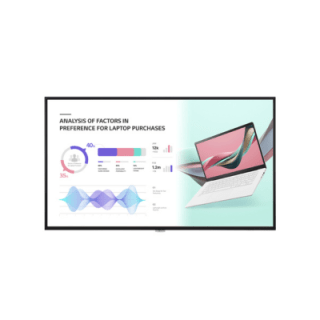B2B Buying

Understanding and mapping the B2B buyer journey
11 min read
Mapping out and understanding your B2B buyer journey is key for understanding the moments that matter for your customers. Learn how to map out your B2B buyer journey and set the stage for the customer journeys that follows.
Your B2B buyer journey is the make-or-break-it sales approach to potential customers. Understanding how to map it and take action on gaps can be the difference between a customer signing on and a potential buyer looking for an alternative partner.
What is the B2B buyer journey?
Your B2B buyer journey is the complete process a buyer will go through, starting from initial awareness of your brand, to the evaluation of your products and services, to finally taking the decision to make a purchase.
It’s most often thought of as initial stepping stone for potential new customers to start their ongoing sales journey with you, but there is also enormous potential for driving organic growth from existing customers through cross-sell and up-sell.
There are many components to an overall customer journey, including things like delivery and customer service, but to ensure there is adequate focus on growth the B2B buyer journey really seeks out those hooks for potentially interested parties and gets them on board to complete their purchasing journey.
Learn about effectively managing the buyer lifecycle in our Account Management Solutions eBook
How is the B2B journey different to the B2C buyer journey?
In the B2C market, potential buyers are usually individuals or families, with specific needs particular to themselves. They might be most concerned with convenience or their personal financial ability to buy your products or services. Relationships might be formed over a shorter period of time, with sales and marketing targeted at a very broad customer base via market segments or personas.
In the B2B market, the concept of a customer needs to be thought of differently, and often includes multiple stakeholders. They may have varying interests, concerns, and goals. Stakeholders can span from the Executive buyer to the end-user and related functions, such as procurement and legal. Relationships might be formed over a longer period of time, with sales and account management resources targeted specifically at that individual customer. Your relationship will be built with more than just the final decision maker – the aggregated connection you create with all stakeholders will make the account a success.
Discover the best practices for improving your B2B account management.
Why is the journey so important?
As mentioned, the buyer journey generally shapes a customer’s route through to the purchase process. Understanding buyer behavior during this process can greatly improve your chances of upselling and retaining your customers later down the line.
B2B buyer journey stages
The B2B buyer’s journey is often divided into three parts: Awareness, Consideration, and Decision. All three stages require an understanding of buying behavior particular to your customer segmentation and target personas.
1. Awareness
In this stage, the buyer is just beginning to get awareness of your company, your products and your services. This awareness is driven by your marketing team members with support from your sales and customer success teams.
In this stage, it is critical to demonstrate you understand the prospect or client’s real business needs and customer pain points, and can highlight the corresponding ways in which your business can help meet these needs. Here, marketing teams will be in content creation mode, creating content and leveraging digital channels such as websites and social media platforms that your sales and account teams can use as leverage to speak to potential customers.
2. Consideration
This stage is about showing how you can help resolve their pain points in a way that builds confidence in the quality and competitiveness of your offering.
Case studies, expert guides, effective in-person engagement and comparative content can help your sales team in lead nurturing once potential customers are aware of your solutions.
3. Decision
At this stage, your potential customers will be making decisions on which products or services they are most interested in. They might reach out to sales, but to help them along to the purchase process, sales reps might need marketing support with product demos, testimonials and product reviews to push marketing leads into sales lead generation.
B2B customer segmentation
To begin your buyer journey, you’ll first need to gather data and segment your potential customers so you can narrow down who is most likely to make a purchase.
1. Gather your data
In this step, you’re collating all the market research data you might need on potential customers. You might focus on industry, company size, location, technologies used or more. Discard companies that aren’t right for your business, but keep ones who might have a potential interest for further segmentation.
2. Create your tiers
Once you’ve got your list of potential accounts, narrow them down into tiers. These could be divided into your largest Tier 1 customers – your key accounts that you want to prioritize – and further tiers. This way, you can develop a strategy for the maximum ROI for your marketing output.
3. Separate according to need
Though you can divide the businesses in your tiers by industry, often customer needs will transcend the sector they’re based in. You can often determine needs by what might drive your customer to your business – do they need more efficient software, or are the current products they use at risk of being deemed obsolete?
4. Divide according to customer development and sophistication
Segmenting the businesses you consider potential leads by their sophistication can help you to establish exactly at what level you need to offer your services or products. For example, a highly sophisticated software provider might not need basic cloud hosting services – but they might need your highly secure package. Similarly, offering too complex a service for a basic need is also likely to lose you potential business.
5. Segment according to behavior
Sometimes, needs and sophistication aren’t as helpful as dividing your potential customers according to their behavior. Some businesses prefer working with suppliers for many years, whereas others are more price-focused and will seek the best deal. By segmenting buyers in this way, you can tailor your marketing and sales efforts to really shape your offering to what your leads will want.


